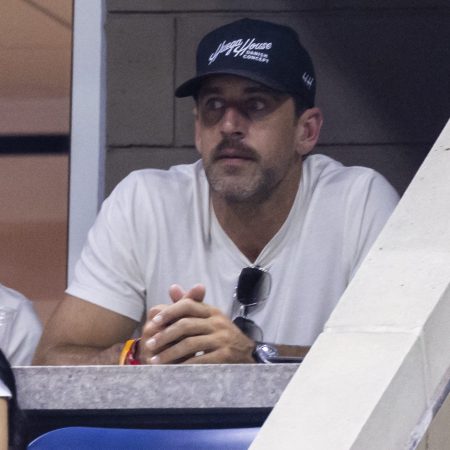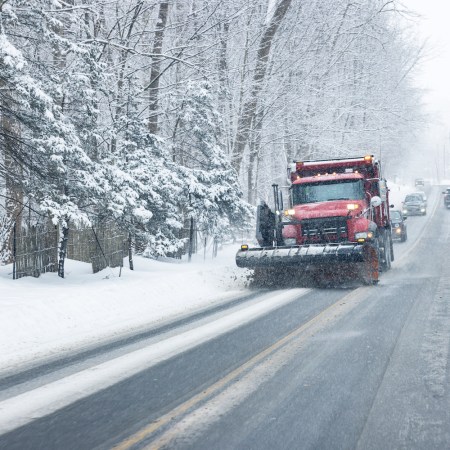Jamais Cascio has spent 25 years thinking about the future for a living. Cascio is a climate futurist based on the eastern edge of the San Francisco Bay Area, and for more than two decades, he’s been forecasting what our futures might look like. What this means for Cascio is that he’s planned for futures that have disappeared before his eyes; ideas that seemed possible in his work 15 years ago have now been rendered impossible. There is a unique grief and spiritual toll to futuring in the climate crisis era. “There are things that I hoped I’d see in my lifetime that I know I won’t because of what we have done to the planet,” he explains over the phone.
“It’s a feeling of the end of the world, but not the end of the present world. It’s the end of the future worlds we hoped to have.”
These are the sort of bleak hypotheticals that futurists study and plan for so that we can be prepared to meet them if needed. That makes these professionals well-positioned to help us adapt in real time to the immediacy of COVID-19 and the ways the pandemic has radically altered our societies. Vanessa Mason, a well-being design futurist with the Institute for the Future, says that in some senses, we’re all futurists now.
“The notion of thinking about the future now is in the mainstream in a way that it hasn’t been in quite some time,” Mason tells InsideHook. “People are realizing that they have the power to imagine a future that could be different.”
Mason says there are two basic approaches to interpreting the pandemic. “There are a set of people that are wondering, ‘How could the world be healthier, happier, more connected?’ And there are another set of people that are thinking that this is upsetting a set of normalcy that was helpful for them because they were able to exploit, extract, and dominate. In the old normal, things were much better for them.”
But the pandemic and the sudden rise of future-focused thinking facilitated by it are unsettling. “Living in this moment and having everyone imagine the future also brings an emotional response,” says Mason. “People necessarily have a response and they don’t have an outlet to do anything with all of that emotion.”
The simultaneous spikes in emotional reactions and physical isolation are creating dangerous psychological conditions. Devora Kestel, director of the Department of Mental Health and Substance Use at the World Health Organization, reported in May that the pandemic was likely to trigger a “global mental health crisis.” Disaster mental health experts — who study the nature, prevalence, and mitigation of psychological distress during and after disasters — say that disasters like the COVID-19 pandemic trigger a slew of conditions that can dramatically worsen mental health.
George Everly, a professor with the Center for Humanitarian Health at Johns Hopkins School of Public Health, lists the common negative impacts that accompany disasters: loss of life with associated grief and depression, job loss and adverse economic impacts, relationship dissolution, and community destruction. These can all lead to the development of chronic depression, post-traumatic stress disorder, and anxiety.
But Everly says that disaster mental health isn’t just designed to document these results. It’s intended to help us develop strategies to cope with them. Everly says that disaster mental health can also be understood as “the study of how to promote human resilience in the wake of disaster.” This is imperative, given that according to a recent formula he and his colleagues have developed, COVID-19 is “one of the most psychologically ‘toxic’ disasters in recent history.”
“Recent research suggests we can even develop personal, organizational, and community ‘cultures of resilience,’” says Everly. “We can even help people and communities develop ‘psychological immunity’ to extreme stress.”
For futurists, resilience in the face of traumatic global phenomena comes in different forms. “Aside from cat videos and whiskey,” Cascio says with a chuckle, “what has helped me is an awareness of history.” Cascio explains that looking at the work of historiographers who’ve documented what we’ve lived through and how we survived it offers a grounding snapshot of dynamics for moving forward. “You could describe the period of the late 19th century to the mid-20th as being a series of economic crashes and corruption, the rise of authoritarian and fascist leadership culminating in a nuclear attack, and that would be completely accurate but sound like a horrible science fiction story,” he says. “That’s what we lived through.”
Cascio keeps a stack of hundreds of photos taken by a member of his grandfather’s division during World War 2. A particular favorite is a shot of women in Paris doing laundry amid the rubble of a bombed-out railway station. “Humans are really good at adapting,” says Cascio.
Mason explains that before engaging in futuring workshops, she and her colleagues will go through exercises to mentally prepare. One of them is similar to Cascio’s strategy: “We call it ‘look back to look forward,’” says Mason. “We look back to history to see that change has happened a lot before.” The point of the exercise is to note what transpired and how people responded to discourage a feeling of isolation or exceptionalism in the face of modern circumstances. Mason says it helps to instil optimism that “there’s a blueprint for how change is supposed to happen, which tamps down the level of ambiguity and also reduces the fear that people generally feel.”
Another exercise, called Four Future Feelings, involves looking at a potential future scenario and considering how that scenario might invoke anger, sadness, happiness, and hope. “Going through that exercise of trying to imagine yourself in an emotional state helps people get away from that binary of, ‘This is a good future or this is a bad future,’” says Mason. The idea is to help people adapt to and prepare for complex emotional responses.
The field of futuring itself can also offer ideological and structural frameworks to galvanize our pandemic brains. Futuring is usually collaborative communal work, explains University of Sydney interdisciplinary designer and futurist Clare Cooper. “Futuring as a collective activity is supposed to invite people into a safe creative space to navigate what they think might be, so as to develop tool kits to try and not be caught off guard,” Cooper explains.
“Any collaborative narrative is richer when there’s people coming in bringing their languages and perspectives and cultures and tools.”
But it’s critical to recognize that futuring can be applied by the capricious enforcers of the status-quo, too. Cooper points to Paul Wolfowitz’s work under both Bush administrations as “seriously fleshed-out futuring with well-funded lobbying” behind it. In order for these strategies and tools to be used responsibly, says Cooper, they need to be rooted in explicitly decolonial and anti-capitalist frameworks.
Cooper notes that this work is already well-underway, and gaining ground. International direct action in support of police abolition and defunding, which are now prominent topics in mainstream media, are key examples of productive futurist strategy. Cooper says MPD 150, a Minneapolis organizing group which advocates for a police-free city, is an example of concrete progressive futuring backed by data and evidence-based projections, upon which policy can be built. This sort of collective, community-led organizing has already produced tangible results — Los Angeles mayor Eric Garcetti is moving to cut the city’s police budget, while Minneapolis city council has committed to disbanding the city’s police force.
Futuring — and our collective mental well-being — rely on our abilities to think and act as a community, rather than as individuals. “It’s about looking at the catastrophe hard, and in detail, and saying together, ‘Now what?’” says Cooper. It’s a strategy that Cooper, paraphrasing design scholars Tony Fry, Clive Dilnot, and Susan Stewart, describes as “speaking of catastrophe to avoid it.”
The work of futuring is necessarily long-haul oriented, and things are likely to get worse before they get better. That doesn’t bother most futurists. Cascio notes that hysteresis—a term that describes a lag between an action and its desired effect, like how an immediate cut in carbon emissions won’t stop rising temperatures until decades later — means impactful work is often obscured or worse, spun by bad actors as ineffective.
Cascio thinks back to the construction of Notre Dame Cathedral, an endeavor that took almost 200 years to complete. He calls the project’s foresight an instance of “generational thinking” that’s been lost — and which we desperately need to recover. “People knew that they were going to die before it was anywhere close to finished, but worked on it for their entire lives,” says Cascio. “We’re probably going to need to get accustomed to that again.”
This article was featured in the InsideHook newsletter. Sign up now.
























